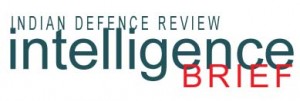The recent election of Jhalanath Khanal of CPN (UML) as the Prime Minister is a grim indicator that political developments in Nepal is going in the most dreadful direction. The new secret arrangement, even before it was exposed, smacked of an unscrupulous deal between an unprincipled and ambitious politician (Jhalanath Khanal) and a wily anti-national and an anti-people outfit, the Maoists.
Jhalanath had been using every trick, machinations and leverages not only in Nepal, but China as well to replace Madhav Kumar Nepal, a member of the same political party, as the Prime Minister. The Chinese factor was therefore a overwhelming consideration in the secret deal.
 As part of the deal, the prime ministership was to be rotated, with Prachanda taking over as the prime minister in May 2011. The Maoists wanted two critical portfolios i.e. Home and Defence. Thanks to the leakage of the secret deal the Maoists have now decided not to join the government. In fact, in the recent times it is the leakages that have prevented Nepal from a complete Maoist takeover. Khanal was thus instrumental in paving the way for a Maoist takeover of the country. It is widely believed in Nepal that Jhalanath Khanal is basically a Maoist in the garb of CPN (UML) politician. In the secret deal, he had also assured the raising of a separate force out of the Maoist armed cadres. It may be reiterated that the Maoists are the only political party having an armed cadre, which was sought to be legitimized during the peace process.The role and interference of these (Scandinavian) countries in fueling insurgencies in Nepal, India and Sri Lanka through various front organizations, even under the aegis of the UN, has been suspect for a longtime.
As part of the deal, the prime ministership was to be rotated, with Prachanda taking over as the prime minister in May 2011. The Maoists wanted two critical portfolios i.e. Home and Defence. Thanks to the leakage of the secret deal the Maoists have now decided not to join the government. In fact, in the recent times it is the leakages that have prevented Nepal from a complete Maoist takeover. Khanal was thus instrumental in paving the way for a Maoist takeover of the country. It is widely believed in Nepal that Jhalanath Khanal is basically a Maoist in the garb of CPN (UML) politician. In the secret deal, he had also assured the raising of a separate force out of the Maoist armed cadres. It may be reiterated that the Maoists are the only political party having an armed cadre, which was sought to be legitimized during the peace process.The role and interference of these (Scandinavian) countries in fueling insurgencies in Nepal, India and Sri Lanka through various front organizations, even under the aegis of the UN, has been suspect for a longtime.Financially too, the Maoists are richest as a political organization. As per a newspaper report, the top ten hotels in Nepal pay hefty sum to the Maoists as ransom. With that kind of armed and financial muscle, how could the world community, particularly India, believe that the Maoists will ever be prepared to behave as a responsible opposition within the framework of a multi-party democracy.
The Maoist leadership used the Nepali Congress, the CPI (UML), and other political outfits to remove the monarchy. It used various church organizations for funding and in return it opened their way to unbridled proselytizing by declaring Nepal a secular state. In fact there was no public demand for it. Now with conversions no more being illegal, the phenomenon has become rampant. It is intriguing that some Scandinavian countries which have very little economic and geopolitical stakes in Nepal have their embassies in Kathmandu. The role and interference of these countries in fueling insurgencies in Nepal, India and Sri Lanka through various front organizations, even under the aegis of the UN, has been suspect for a longtime. The religious agenda of these countries weighs very heavily in their global perspective and outreach.
The Maoist leadership has therefore used some NGOs of those European countries who facilitate through the church for funding and political support; it has used China for ideological and covert support; it has used the Indian Maoists for cross-border coordination, which includes arms smuggling and to establish linkages with other insurgent groups; it has used some Indian intellectuals to influence the Indian political discourse on Nepal; it has used the Indian establishment to earn political legitimacy, and it has used the UNMIN, which was basically under the influence of some European countries, which were solely guided by their religious agenda, to gain legitimacy for its armed cadres. It is for this reason that there was much relief and joy in most of Nepal other than the Maoists, when the UNMIN packed its bag in Nepal on 15 January 2011. Far from contributing to the peace process, it had become a facilitator for a Maoist takeover of Nepal.
The political direction of the Maoists in Nepal has strong parallels with Mao’s communist movement in the 1930s, which eventually led to the totalitarian communist regime taking over China, something which Chinese have been condemned to suffer ever since. Just as the Maoists of Nepal use every alliance as an opportunity to further their cause, the communists under Mao in China had courted the Kuomintang Nationalist Forces to fight the Japanese, who had invaded China in 1937. Later, the communists dumped the Kuomintang and finally captured their own country after much bloodshed. Historically, Mao vies with Stalin and Hitler for having killed maximum number of their own people.




